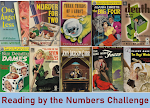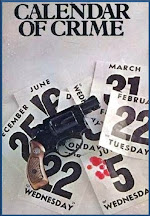 The Female Detective was published in 1864. Written by James Redding Ware under the pseudonym Andrew Forrester, it not only represents what is probably the first collection of stories about the Metropolitan Police (formed in 1829) but also introduces readers to the first professional female detective in fiction. She is unnamed in the longest story, "The Unknown Weapon," but in other stories by Forrester, she is referred to as
Mrs. G---- of the Metropolitan Police. She makes reference to herself
and another female officer as constables...and I find it interesting to
have references to female constables at this early date.
The Female Detective was published in 1864. Written by James Redding Ware under the pseudonym Andrew Forrester, it not only represents what is probably the first collection of stories about the Metropolitan Police (formed in 1829) but also introduces readers to the first professional female detective in fiction. She is unnamed in the longest story, "The Unknown Weapon," but in other stories by Forrester, she is referred to as
Mrs. G---- of the Metropolitan Police. She makes reference to herself
and another female officer as constables...and I find it interesting to
have references to female constables at this early date. Mrs. G---- generally works undercover and only represents herself as a detective when she must. We learn very little about her--later female detectives will be described as falling into their profession out of need, either to support themselves or loved ones in reduced circumstances. But we don't even learn that much about Mrs. G----. The stories themselves are very casebook in nature, running true to the form of other casebooks of the time. Like her male counterparts, she uses professional methods--hunting for clues, looking over the scene of the crime, questioning suspects, and using cunning and disguise to reach her conclusions. But not all of her cases are great successes. She tells at least two stories where the culprit gets away and she isn't shy about relating the shortcomings of the police force of the time.
In "Tenant for Life" Mrs. G--- becomes interested in a story that her friends the Flemps tell her. Mr. Flemps is a driver and while out driving one evening a poor young women approaches him and asks him to take her child to raise (as she cannot afford to). Flemps has no sooner taken the child and started on his way again when another young woman approaches him--first to hire him for transport, but then when he refuses to ask if he has seen a young woman with a child. The child in his carriage cries and the woman is ecstatic to have found the child and pays Flemps to take the child away. Mrs. G---- is intrigued by the story and feels sure that someone somewhere is up to no good. She determines to get to the bottom of the story and by the end she knows that it involves the rightful heir of some very important property.
"Georgy" relays one of the failures. Georgy is a clerk at a local bank. He manages to abscond with a goodly sum and does so in a fashion that makes it impossible for the authorities to catch up with him. Mrs. G---- tells us the particulars of the case to let her readers know that criminals maybe the most charming of fellows and completely fool the most cunning of detectives (namely, Mrs. G----).
"The Unraveled Mystery" is about a mysterious carpet bag that appears on one of the Thames bridges. It contains bits of human remains, but no head. The official police are baffled and seem unable to solve the mystery Mrs. G----'s colleague, Dr. Y----, comes to tell Mrs. G--- about his theory about the case. We also have one of the first instances where we are told in a detective story that the use of a knife indicates that the murderer/s must be foreign. Englishmen just don't use knives, you know.
"The Judgement of Conscience" is a shorter work. In this one, Mrs. G---- insists on ballistic evidence being examined. Her insistence saves an innocent man from being hanged for a crime he did not commit.
"A Child Found Dead: Murder or No Murder" is an odd little tale. Mrs. G--- is not really the detective here. She relays the story as told to her by Dr. Y----. A young child is killed and the reader is asked to believe that the killer struck while sleepwalking. If true (I'm not convinced), does that make the killing murder? Can somebody be convicted for murder for a death caused while they are sleepwalking? I don't know how to answer that one. But it doesn't really matter to me, because I don't really believe that someone would kill under those circumstances.
"The Unknown Weapon" is the longest of the stories. It is about the death of the son of a miserly old man who is killed while apparently in the the process of breaking into his own father's house. He has been stabbed with a weapon that no seems to be able to identify. Mrs. G---- is a thoroughly scientific detective in this outing, reminding the reader of Holmes. Had she the advantages of his training at university, I'm sure she would have examined her own bits of fluff under the microscope rather than sending them off in a tin box and directing "it to the gentleman who is good enough to control these kind of investigations." She faithfully takes up every piece of evidence, giving it a more thorough going-over than the local constable, looks over the scene of the crime, and thinks the problem through with logic that Holmes could not fault. There is no "feminine intuition" at work; it is a thoughtful, orderly investigation. The grand finale is a bit of a let-down--but over all a very good early detective story.
"The Mystery"is the final and shortest of the entries. It's not really much of a mystery at all. A young woman is told by her father that she must marry the man he has chosen or he will lock her in her room until she complies. She is in love with someone else and refuses to obey her father. She manages to get a message to her love and then escapes from the locked room. How she got out and what happens next is the only (tiny) mystery that needs explained.
The best story is "The Unknown Weapon." It ranks at four stars--balancing the entire collection out at a solid three-star rating.






























No comments:
Post a Comment